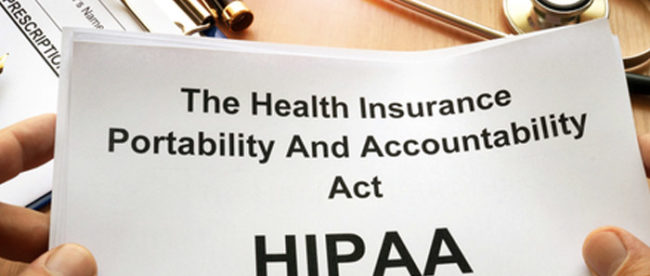Pacific Prime Fundamentals Explained
Pacific Prime Fundamentals Explained
Blog Article
Pacific Prime Fundamentals Explained
Table of ContentsSome Of Pacific Prime4 Easy Facts About Pacific Prime ShownSome Known Incorrect Statements About Pacific Prime 6 Simple Techniques For Pacific Prime
In many states, the insurance company is required to send you a duplicate of the modifications to your policy. It is very important that you check out Recommendations or Bikers so you comprehend exactly how your policy has altered and if the policy is still sufficient to fulfill your demands. To get a copy of your insurance coverage, please call your insurance policy representative or business.
The Institute of Medication (IOM) Committee on the Effects of Uninsurance launches an extended examination of evidence that addresses the relevance of health insurance protection with the magazine of this record. Coverage Issues is the very first in a collection of six records that will be provided over the following 2 years recording the truth and consequences of having an estimated 40 million people in the USA without medical insurance coverage.

A Biased View of Pacific Prime
The goal of this series of researches is to redouble plan focus on a longstanding trouble. Following the lengthiest economic growth in American background, in 1999, an approximated one out of every 6 Americans32 million adults under the age of 65 and more than 10 million childrenremains without insurance (Mills, 2000).

10 percent of the populace accounts for 70 percent of health care expenses, a connection that has actually remained consistent over the past three years (Berk and Monheit, 2001) - global health insurance. Thus health insurance coverage remains to serve the function of spreading threat even as it progressively finances routine treatment. From the viewpoint of healthcare providers, insurance coverage brought by their individuals helps protect an earnings stream, and areas benefit from economically feasible and steady health and wellness treatment specialists and establishments
Federal government supplies health insurance to populations whom the personal market might not offer successfully, such as handicapped and seniors, and populaces whose access to healthcare is socially valued, such as children and expecting ladies. The utmost ends of medical insurance coverage for the specific and areas, including office areas of workers and employers, are enhanced health and wellness outcomes and lifestyle.
All About Pacific Prime
Employees rank medical insurance initially without a doubt in importance among all the benefits offered in the this workplace (Salisbury, 2001). Although there have actually been substantial investments of individual and public funds to provide medical insurance, many individuals still have no coverage. In spite of substantial reporting of study searchings for and healthcare study results, the public stays confused and mistaken about Americans without health and wellness insurance policy and the ramifications of lacking coverage.

Without inquiry, the complexity of American healthcare funding systems and the wide range of sources of details contribute to the general public's confusion and apprehension about wellness insurance coverage stats and their interpretation. This record and those that will follow goal to boil down and offer in readily understandable terms the comprehensive research study that bears upon questions of health insurance coverage and its relevance.
Fifty-seven percent of Americans surveyed in 1999 believed that those without medical insurance are "able to obtain the treatment they require from doctors and hospitals" (Blendon et al., 1999, p. 207). In 1993, when national attention was focused on the problems of the uninsured and on pending healthcare regulation, just 43 percent of those polled held this idea (Blendon et al., 1999).

They also receive less preventative services and are much less likely to have regular look after chronic conditions such as hypertension and diabetes mellitus. Chronic diseases can lead to pricey and disabling issues if they are not well taken care of (Lurie et al., 1984; Lurie et al., 1986; Ayanian et al., 2000). One nationwide study asked more than 3,400 grownups regarding 15 highly severe or dark conditions.
Not known Details About Pacific Prime
Extra evidence is provided later on in this phase in the discussion of insurance and accessibility to health treatment. https://qualtricsxmxkzkppyv7.qualtrics.com/jfe/form/SV_9u8Yr9IFs6bVle6. People without health insurance policy are young and healthy and select to do without insurance coverage. Almost half (43 percent) of those surveyed in 2000 believed that individuals without medical insurance are more probable to have illness than individuals with insurance
Voters and plan manufacturers in focus group conversations define those without insurance as youngsters that have the chance to be covered and feel they do not need it (Concierge Novelli, 2001). Compared to those with at least some exclusive coverage, the without insurance are less likely to report remaining in superb or extremely excellent wellness (Agency for Healthcare Research Study and Quality, 2001).
RESOURCE: Center for Expense and Funding Researches, Company for Medical Care Research Study and High quality, based on MEPS information. Young adults in between 19 and 34 are much more likely to lack medical insurance than any other age. This is chiefly because they are less usually eligible for employment-based insurance due to the nature of their task or their short tenure in it.
The assumption that individuals without insurance have better-than-average health follows from confusing the fairly young age account of the uninsured with the better health and wellness, on standard, of more youthful persons. This covers the web link in between wellness condition and wellness insurance. For those without access to workplace health insurance coverage, bad health and wellness is a possible barrier to buying nongroup protection since such protection may be highly priced, exclude preexisting conditions, or be simply unavailable.
Report this page